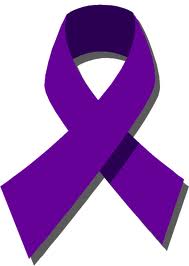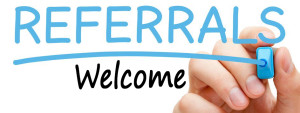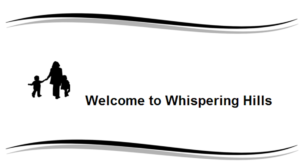National HIV Awareness Month
As we commemorate the second anniversary of the release of the United States’ first-ever National HIV/AIDS Strategy and the return of the International AIDS Conference to the U.S. after 20 years, July is also National HIV Awareness Month! This is the opportunity to re-ignite Americans through awareness and action to change the landscape of the HIV epidemic in the U.S.
The goals of the National HIV Awareness Month are: to create a wide scale public awareness of HIV/AIDS, end HIV stigma and discrimination and engage new stakeholders in the fight against HIV/AIDS with the ultimate goal of ending the epidemic. Throughout the years, many Americans have began to view HIV/AIDS as a global problem with no impact here in the U.S. However, 56,000 Americans are infected with HIV every year.
National HIV Awareness Month is a call to action for Americans to work towards the goals of the National HIV/AIDS Strategy and ultimately an AIDS-free generation.
For more information on National HIV Awareness Month, visit http://www.nationalhivawarenessmonth.org.

Progress Or Indication Of A Bigger Problem
30 years later about 50,000 Americans still become infected with HIV each year. This number has remained steady for the last 10 years. Currently, more people are living with HIV which translates into more opportunities to transmit the virus. This is why routine HIV testing and prevention is so important.
Dr. Kevin Fenton, chief of AIDS prevention for the CDC says, 50,000 is an unacceptably high level and without better prevention efforts, we’re likely to face an era of rising infection rates.
In fact, if the number of people living with HIV continues to grow, the stability will be short-lived. For most risk groups, infection rates remain stable with 61 percent of cases contracted through gay or bi-sexual sex, 27 percent through heterosexual sex and 9 percent through drug injections. However, the new HIV incidence data show that infections among African- American gay and bi-sexual men has rapidly increased by 48 percent.
The new generation of both men and women must be reached, so that they can learn how to protect themselves from HIV. We cannot become complacent.
Things that you can do to protect yourself and others include:
Routine HIV testing
Change your behavior
Use condoms EVERY time you engage in ANY sexual behavior
Be informed about HIV/AIDS
Source: http://articles.boston.com/2011-08-04/news/29851446_1_aids-prevention-infection-rates-aids-policy
W.O.M.E.N. Launches Official YouTube Page
Check out our first video!
http://www.youtube.com/user/EducatingWOMEN
International AIDS Conference Returns To US
For the first time in decades, the International AIDS Conference will take place in the United States. After many years and much controversy, the Obama administration has lifted a policy in place since 1987 which prohibited foreign nationals with HIV/AIDS from visiting the United States.
AIDS 2012 will take place July 22-27, 2012 in Washington, DC at the Walter E. Washington Convention Center. The International AIDS Conference is the premier gathering for those working in the field of HIV, policy makers, people living with HIV/AIDS and others committed to ending the epidemic. This is also a prime opportunity for researchers from around the world to share the latest scientific advances in the field, learn from one another s expertise, and develop strategies for advancing efforts to treat and prevent HIV.
Over 20,000 delegates from nearly 200 countries are expected to be in attendance. AIDS 2012 will play a key role in shaping international responses to this devastating epidemic.
W.O.M.E.N. Kicks Off Our Annual Thanksgiving Give Away
W.O.M.E.N. is now accepting Food Donations for our Annual Thanksgiving Give Away for families who would not otherwise have anything to eat for Thanksgiving.
HOW YOU CAN HELP
Donate perishables (i.e. turkey, chicken, ham, roast beef)
Donate non-perishables and dinner trimmings (i.e. canned foods, boxed stuffing, rice, cranberry sauce,dry beans)
Donate dinner rolls, bread and desserts
We also need businesses and organizations that would like to donate or serve as collection or drop-off site.
Deadline for donations are October 20, 2014 however we will continue to accept items at the office up until November 18, 2014.
**Food is also accepted year round in order to stock the food pantry for W.O.M.E.N.’s Full Plate Program.
W.O.M.E.N. Approved To Sponsor An AmeriCorps VISTA
W.O.M.E.N. was recently approved to sponsor an AmeriCorps VISTA! We are honored and excited about this wonderful opportunity! And we need your help.
Currently, we are looking for someone that wants to make a difference in the lives of others in the community and join us as we begin to work toward our ultimate goal of implementing W.O.M.E.N.’s H.O.U.S.E.
Some of the AmeriCorps VISTA benefits include:
A modest living allowance, health coverage, life insurance, child care assistance, post service award (cash or education), and paid mileage.
If you are interested in applying for the position, please go to the “Employment” section of our website.
For more detailed information on the VISTA program and benefits,
please visit, http://www.americorps.gov/about/programs/vista.asp
Nacional Latino Para La Concientizacion Del SIDA
Día Nacional Latino para la Concientización Del SIDA
El 15 de Octubre culmina la celebración del Mes de la Herencia Hispana y marca el día designado como el Día Nacional Latino para la Concientización sobre el SIDA (NLAAD). NLAAD es una campaña nacional de mercadeo social que unió la comunidad Hispana sobre el VIH, la promoción de la prueba del VIH, la prevención y educación sobre diferentes temas de salud como hepatitis viral, enfermedades de transmisión sexual y tuberculosis. ñNLADD
Para más información:
Llama 615-256-3882

Breast Cancer Awareness Month
October is Breast Cancer Awareness Month,Women On Maintaining Education and Nutrition would like to stress the importance of taking action when it comes to your breast health. Breast cancer is one of the most common cancers among women in the United States and is the most frequently diagnosed cancer among nearly every racial and ethnic group. Statistics show that White women have a higher rate of developing breast cancer; however African-American women under the age of 40 have a higher incidence of breast cancer and are more than likely to be diagnosed with larger tumors. Also, African-American women are more likely to die from breast cancer and the five year survival rate is 79 percent lower than that of any other racial or ethnic group in the United States.
There are many reasons for the differences in incidence and rates of survival, which include:
Presence of risk factors
Barriers to health care access
Later stage diagnoses
Biological and genetic differences in tumors
Because of the higher incidence and lower rates of survival, early detection and breast self-awareness are critical to breast health. It is very important to be pro-active about your breast health; there are a few things you can do which include:
1. Know your risk
-Talk to your family an know your health history
-Talk to your health care provider about your personal risk
2. Get Screened
3. Know what is normal for you
– Perform a self breast exam every month and see your health care provider about any changes such as lumps or change in size or shape of the breast.
4. Make healthy lifestyle choices
– Maintain a healthy diet
– Exercise
– Limit alcohol intake

Domestic Violence Month
October is also Domestic Violence Awareness month. Domestic violence has no regard for socio-economic status, race, ethnicity, religion, employment status, physical ableness, age, education, marital status, or sexual orientation.
In the United States, one of the most dangerous places for a woman is her home. Every 9 seconds in the US, a woman is assaulted or beaten, and every day more than three women are murdered by their husbands or boyfriends. Violence is often a cycle for both women and men. Some grew up in abusive homes and in turn think abuse is the norm. A lot of women do not leave their abuser because they are emotionally and economically dependent on the man as well as scared of the consequences of leaving. This cycle of violence is unhealthy and a very serious issue that will only continue unless both the abuser and the victim receive help and treatment.
If you or someone you know is experiencing domestic violence, please seek before it is too late. If you do not know where to find help, please contact W.O.M.E.N. at 615-256-3882 and we will get you the help you need. You can also review our “Resources” section for more information.
Poverty In The US
According to new census data, 1 in 15 Americans are now living in poverty and 15% (45.8 million) of the US population are now on food stamps. This is an 8% increase over the past year. By these numbers, the poorest include a single person earning less than $5,570 annually or a family of four living on $11,157. However, the official federal poverty threshold for a family of four is $22,113. This threshold was developed in the 1960s and determines eligilbity for government aid such as food stamps and Medicaid. A major issue with the federal poverty line is that it is the same across the board and does not reflect geographic locations. For example, despite differences in cost of living and incomes, the poverty level in New York is the same as in Mississippi.
However, the Census Bureau has offered a solution to this issue by announcing a second way to calculate the poverty line, the Supplemental Poverty Measure. This method is more detailed and more accurately reflects both expenses and benefits that affect low-income families. For example, geographic location, government assistance and expenses are all considered in the new calculation. The new calculation also increases the poverty threshold from $22,113 to $24,242 which added 3 million more to the number of poor individuals in the US.
Due to financial hardships and unemployment, the situation for many is expected to become grimmer and the number of those living in poverty is expected to increase.






